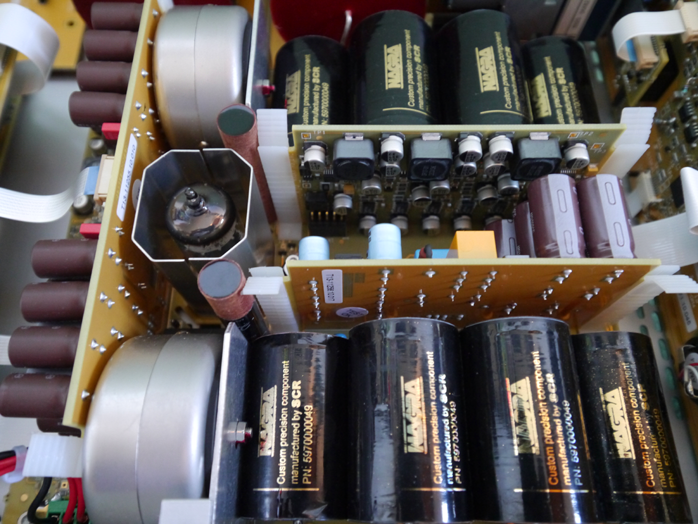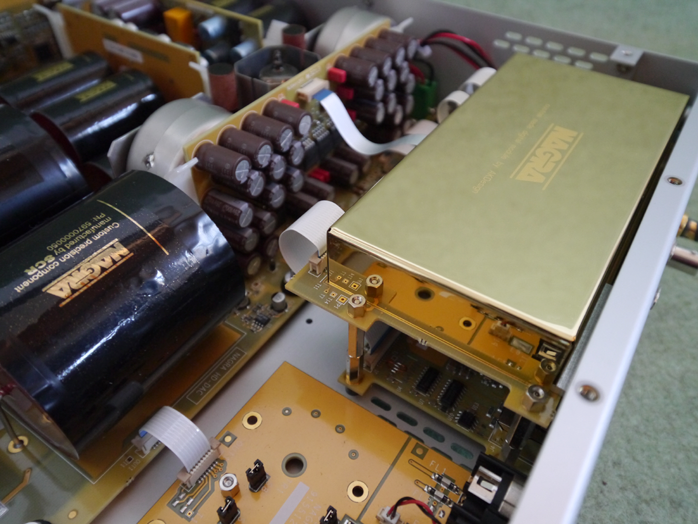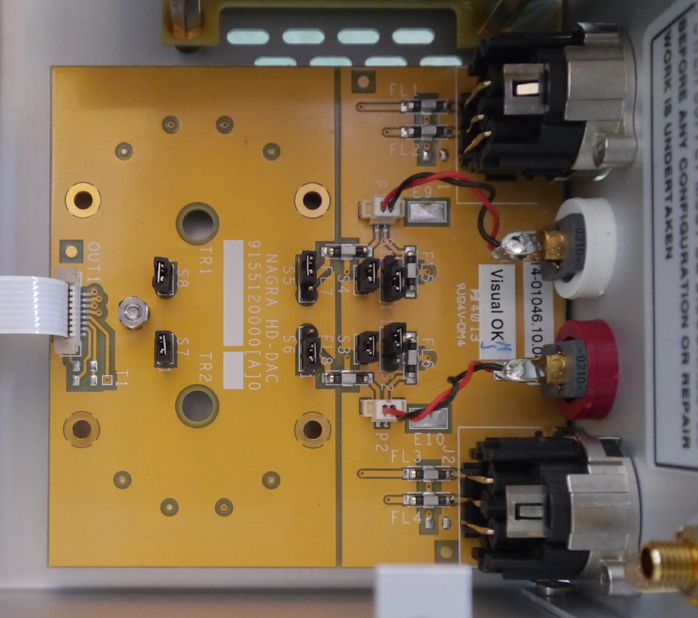This review page is supported in part by the sponsors whose ad banners are displayed below |
 |
 |
|
 |
First impressions. With the HD DAC's two power leads plugged into the MPS—battery for digital—and the Jazz occupying the third power socket, a number of things became clear in quick succession. One, with my soundkaos Wave 40 tone-wood widebanders run off my FirstWatt SIT1 monos, DAC direct exhibited clearly stronger energy transmission, spunk, speed and top end than 'detouring' through the Jazz. Since those speakers are tuned for textures, tone mass and roundness by design, the preamp's contributions in the same realm were no longer desirable. The HD DAC had enough of its own to exceed my usual Metrum Hex by instant triangulation. For this setup, source direct was the winning ticket.
|
|
Two, the HD DAC differentiated between PureMusic and Audirvana with a far wider delta of distinctiveness than any of my in-house converters ever had. Whilst I always knew that the NOS Hex sounded best in PM's NOS-style upsampling to 176.4kHz whilst the AURALiC Vega preferred Audirvana at 352.8kHz maximum-resolution upsampling, these differences hadn't been this pronounced. Matthieu was still present and agreed on my choice. It was blindingly obvious. He then let on that Nagra use Audirvana. You might say it's a genetic predisposition. My own ears merely confirmed it.
|
 |
With the HD DAC, Audirvana was clearly superior on flow, weightiness, bass control and air. And there was something else I'd never heard before. Upsampling Audirvana to 352.8kHz for 16/44.1 incurred what behaved like a minor but obvious gain boost over native mode. Again Matthieu and I heard the same thing. Higher magnification power in the source position reveals things one hasn't heard before.
|
|
|
|
Three, the gap between hi-rez and Redbook was noticeably wider than usual. The former exhibited clearly better treble and hall sound. By contrast, 16/44.1 fare sounded somewhat dull and pale. I'd frankly not bought into the hi-rez hype yet. Now it seemed the subject deserved renewed investigation. Whilst experience and associated cynicism expect no land slide victory—the quality of the recording/mastering process and provenance will always dominate—I was now prepared to chance across hi-rez files that would actually live up to their promise in far more demonstrable hence self-selling ways than before.
|
 |
|
This three-pronged assault on my private status quo led to a quick and rather inescapable conclusion. Actually, it simply underwrote a decision I'd put in motion months earlier. To do the HD DAC and other ultra-pedigree kit proper justice, I really needed speakers of more extreme resolution than my vintage-inspired whizzer-fitted 8-inch widebanders which are tasked with handing over to a Raal ribbon at a high 7kHz.
In proper synchronicity, during the evening of the HD DAC's arrival, Albedo Audio confirmed that my new all-ceramic Aptica speakers would ship from Italy the very next day. My acoustic precision microscope was en route to build out my hardware arsenal. When your ears stop tracking, turn up the resolution. |
|
|
|
 |
Part of a reviewer's job involves looking over a mastering engineer's shoulder. The more one hears, the more one is bound to be disappointed. Commercial productions are as far removed from the mythical purity of recorded truth as a major motion picture is alienated from unscripted spontaneity. Both are manufactured artifice to the extreme. For a primer on that subject, see what we said about it here. I'm invoking it merely to underscore the potential conflict between listening for pleasure as my idea of why music lovers (should) own hifi systems in the first place; and applying extreme resolution to this task. If you end up with far fewer albums or files which you can enjoy because you get stuck on what's wrong with them, I'd call it counterproductive. Here much depends on whether you build a music library based on content first; or go primarily after sound quality aka superior recordings even if their music or performances are weaker.
|
 |
|
|
|
For headfi Nagra claim that the ¼" jack is no afterthought or convenience item but a very serious solution. In fact Matthieu reported that a French client had bought an HD DAC for just that purpose. He doesn't have speakers in his Paris flat nor his vacation pad. But he does own very high-zoot headphones. Now he simply packs the HD DAC into his suitcase and moves between both places. In short, the HD DAC could be an ultimate speaker-free desktop or monitoring system.
|
 |
The bay for the optional output transformers to convert the pseudo XLRs into true balanced fixed outputs.
|
 |
  |
 |